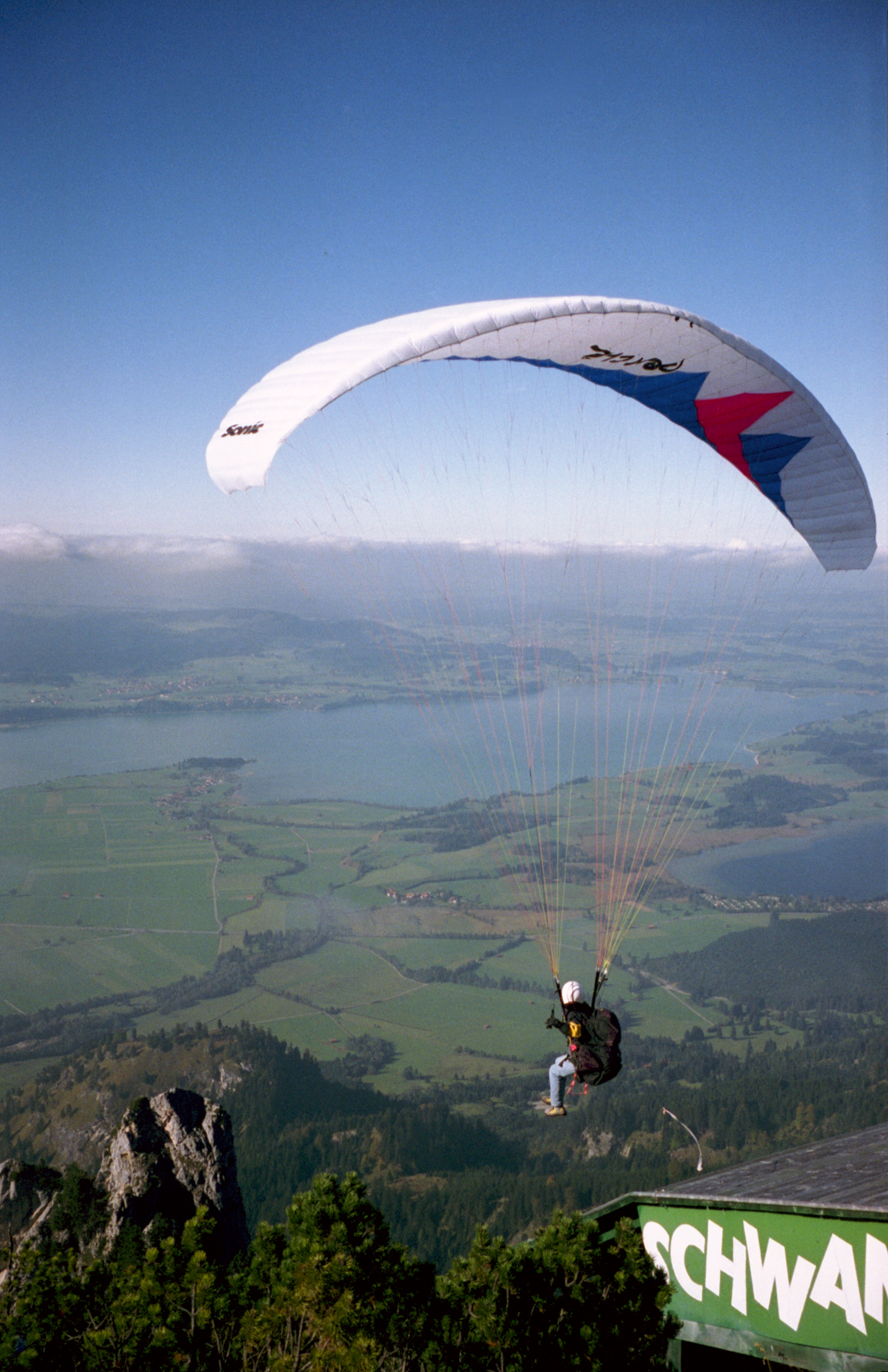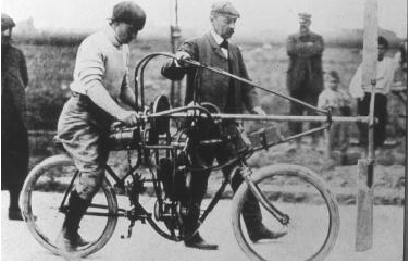|
Ferdinand Ferber
Louis Ferdinand Ferber (8 February 1862 – 22 September 1909) was a French Army officer who played an important role in the development of aviation during the early 1900s. Although his aircraft experiments were belatedly successful, his early recognition and publicizing of the work of the Wright Brothers was a major influence on the development of aviation in Europe. Early life Born in Lyon in 1862, he studied at the Ecole Polytechnique before joining the Army, eventually becoming an instructor the School of Applied Artillery at Fontainbleau in 1897. It was here that he came across the work of Otto Lilienthal, through reading about his work in an article in the '' Illustrierte Zeitung.'' Aviation experiments Early attempts After some experimentation with models Ferber constructed his first full-size unmanned glider, which had a lozenge-shaped wing about across, and unsuccessfully attempted to fly it from a launching tower at his family's estate in Rue in Switzerland in Aug ... [...More Info...] [...Related Items...] OR: [Wikipedia] [Google] [Baidu] |
Boulogne
Boulogne-sur-Mer (; pcd, Boulonne-su-Mér; nl, Bonen; la, Gesoriacum or ''Bononia''), often called just Boulogne (, ), is a coastal city in Northern France. It is a sub-prefecture of the department of Pas-de-Calais. Boulogne lies on the Côte d'Opale, a touristic stretch of French coast on the English Channel between Calais and Normandy, and the most visited location in the region after the Lille conurbation. Boulogne is its department's second-largest city after Calais, and the 183rd-largest in France.Téléchargement du fichier d'ensemble des populations légales en 2017 [...More Info...] [...Related Items...] OR: [Wikipedia] [Google] [Baidu] |
Antoinette (manufacturer)
Antoinette was a French manufacturer of light petrol engines. Antoinette also became a pioneer-era builder of aeroplanes before World War I, most notably the record-breaking monoplanes flown by Hubert Latham and René Labouchère. Based in Puteaux, the Antoinette concern was in operation between 1903 and 1912. The company operated a flying school at Chalons for which it built one of the earliest flight simulators. Private engine-building venture Antoinette began as a private venture led by the engineer Léon Levavasseur and financed by Jules Gastambide, who owned an electricity generating station in Algeria. While on holiday with Gastambide and his family in 1902, Levavasseur expressed his interest in the emerging field of aviation and proposed the development of light, powerful engines for use in aircraft. Levavasseur then suggested to Gastambide's daughter, Antoinette, that the engines should be named after her. Gastambide financed the venture. Levavasseur patented th ... [...More Info...] [...Related Items...] OR: [Wikipedia] [Google] [Baidu] |
Dihedral (aircraft)
In aeronautics, dihedral is the angle between the left and right wings (or tail surfaces) of an aircraft. "Dihedral" is also used to describe the effect of sideslip on the rolling of the aircraft. Dihedral angle is the upward angle from horizontal of the wings or tailplane of a fixed-wing aircraft. "Anhedral angle" is the name given to negative dihedral angle, that is, when there is a ''downward'' angle from horizontal of the wings or tailplane of a fixed-wing aircraft. Dihedral angle has a strong influence on dihedral effect, which is named after it. Dihedral effect is the amount of roll moment produced in proportion to the amount of sideslip. Dihedral effect is a critical factor in the stability of an aircraft about the roll axis (the spiral mode). It is also pertinent to the nature of an aircraft's Dutch roll oscillation and to maneuverability about the roll axis. Longitudinal dihedral is a comparatively obscure term related to the pitch axis of an airplane. It ... [...More Info...] [...Related Items...] OR: [Wikipedia] [Google] [Baidu] |
Chalais-Meudon
Chalais-Meudon is an aeronautical research and development centre in Meudon, to the south-west of Paris. It was originally founded in 1793 in the nearby Château de Meudon and has played an important role in the development of French aviation. Balloons The story of aviation at Chalais-Meudon starts in October 1793 when the French Public Safety Committee ordered the construction of an observation balloon capable of carrying two observers. The old royal grounds at Meudon were allocated for this work, with the Château de Meudon chosen as the centre, with Nicolas-Jacques Conté as director. Two French Balloon Corps balloon companies had already been created, and the new organisation's role was to build balloons and train their pilots and operators. The first balloon, the ''Entreprenant'', was built within four months, and on 31 October 1794, the National School of Ballooning was created, with Conté as its director. Many other balloons were then built in a short period, including, ... [...More Info...] [...Related Items...] OR: [Wikipedia] [Google] [Baidu] |
Charles Renard
Charles Renard (1847–1905) born in Damblain, Vosges, was a French military engineer. Airships After the Franco-Prussian War of 1870-1871 he started work on the design of airships at the French army aeronautical department. Together with Arthur C. Krebs and his brother Paul, in 1884 he constructed '' La France'', which made its maiden flight on 9 August 1884 at Chalais-Meudon, making a 23-minute circular flight. This was the first time that a flying machine made a flight which returned to the place of take-off. It was later exhibited at the Paris Exposition Universelle (1889). Preferred numbers He also proposed a now widely used system of preferred numbers known as Renard numbers that was later named after him and became international standard ISO 3. It helped the French army to reduce the number of different balloon ropes kept on inventory from 425 to 17. Road Train Colonel Renard invented the Renard Road Train first developed by Darracq and displayed by them in 1903 ... [...More Info...] [...Related Items...] OR: [Wikipedia] [Google] [Baidu] |
Berck-sur-Mer
Berck (), sometimes referred to as Berck-sur-Mer (, literally ''Berck on Sea''), is a commune in the northern French department of Pas-de-Calais. It lies within the Marquenterre regional park, an ornithological nature reserve. Geography Situated just to the north of the estuary of the river Authie, Berck has a huge expanse of sandy beach and impressive grassy-topped dunes facing north onto the English Channel. The town comprises two parts – to the east, the old fishing town of Berck-Ville and to the west the seaside area, Berck-sur-Mer. Toponymy Berck is attested through the centuries in various forms: ''datum Bergis'' and ''Berc'' in 1215, ''Bierk'' in 1282.Albert Dauzat and Charles Rostaing, 72b. Its origin has been conjectured to come either from Germanic ''berg'' "hill", "mount" or ''birkja'' "place of the birch trees", designating the birch tree wood nearby. The Modern Dutch word for "birch" is ''berk''. In Dutch the name is ''Berk-aan-Zee''. History The old town w ... [...More Info...] [...Related Items...] OR: [Wikipedia] [Google] [Baidu] |
Atglen, Pennsylvania
Atglen is a borough in Chester County, Pennsylvania, United States. According to the 2020 Census, its population is 1,311. History The area now known as Atglen was originally a wilderness. Native Americans made paths which cut across this area when they traveled from Paxtang (present day Harrisburg) to present day New Castle, Delaware to trade with the Swedes and later the English. The Great Minquas Path was one of these trails. In 1717, Sadsbury Township was organized. It covered a large territory, including in whole or in part the present-day townships of Sadsbury, West Sadsbury, West Caln, Valley, East Fallowfield, West Fallowfield, and Highland; the boroughs of Atglen, Parkesburg, Modena, and South Coatesville; the city of Coatesville; and parts of Lancaster County. In August 1728, several inhabitants petitioned the court to separate Sadsbury from Fallowfield because of the former's size. In November of that year, the township was subdivided into East and West Sa ... [...More Info...] [...Related Items...] OR: [Wikipedia] [Google] [Baidu] |
Buchet
Buchet () was a French motorcycle and automobile manufacturer between 1911 and 1930. Origins Société Buchet was founded in 1888 at Levallois-Perret as a producer of lamps. In 1899 Élie-Victor Buchet began to manufacture engines for auto-makers. Buchet engines were also used to power other manufacturers' aircraft (from 1906), and motorcycles. The business It was not till 1911, initially at Levallois-Perret, and after 1919 at Billancourt, that Buchet started to produce cars of its own. In 1919 the company was purchased by Gaston Sailly and renamed Gaston Sailly, Moteurs et Automobiles Buchet, with a new factory at Billencourt. The cars continued to be branded with the "Buchet" name, however. By the end of the decade Buchet was one of a number of automakers to find itself competed out of business by France's by now increasingly dominant larger auto-makers. Activity ceased at the factory at the end of 1929, and in 1930 Buchet went out of business. The cars Early cars ... [...More Info...] [...Related Items...] OR: [Wikipedia] [Google] [Baidu] |
Ernest Archdeacon
Ernest Archdeacon (23 March 1863 – 3 January 1950) was a French lawyer and aviation pioneer before the First World War. He made his first balloon flight at the age of 20. He commissioned a copy of the 1902 Wright No. 3 glider but had only limited success. He was regarded as France's foremost promoter and sponsor of aviation, offering prizes (''Coupe d'Aviation Ernest Archdeacon'' and the ''Deutsch de la Meurthe-Archdeacon prize''), commissioning designs, and organising tests and events. His most lasting contribution to aviation is the Aéro-Club de France, the oldest aero-club in the world, which he co-founded in 1898. On 29 May 1908, Archdeacon became the first aeroplane passenger in Europe when he was piloted by Henry Farman at Ghent. Early life Archdeacon was born and raised in Paris, and studied law for a career at the bar. His passionate interest in science led him to also study ballooning and aviation, and in 1884, at age 20, he made his first balloon fli ... [...More Info...] [...Related Items...] OR: [Wikipedia] [Google] [Baidu] |
Wing Warping
Wing warping was an early system for lateral (roll) control of a fixed-wing aircraft. The technique, used and patented by the Wright brothers, consisted of a system of pulleys and cables to twist the trailing edges of the wings in opposite directions. In many respects, this approach is similar to that used to trim the performance of a paper airplane by curling the paper at the back of its wings. Description In 1900, Wilbur Wright wrote, "...my observations of the flight of birds convince me that birds use more positive and energetic methods of regaining equilibrium than that of shifting the center of gravity...they regain their lateral balance...by a torsion of the tips of the wings. If the rear edge of the right wing tip is twisted upward and the left downward the bird becomes an animated windmill and instantly begins to turn, a line from its head to its tail being the axis." After Wilbur demonstrated the method, Orville noted, "From this it was apparent that the wings of a mac ... [...More Info...] [...Related Items...] OR: [Wikipedia] [Google] [Baidu] |





